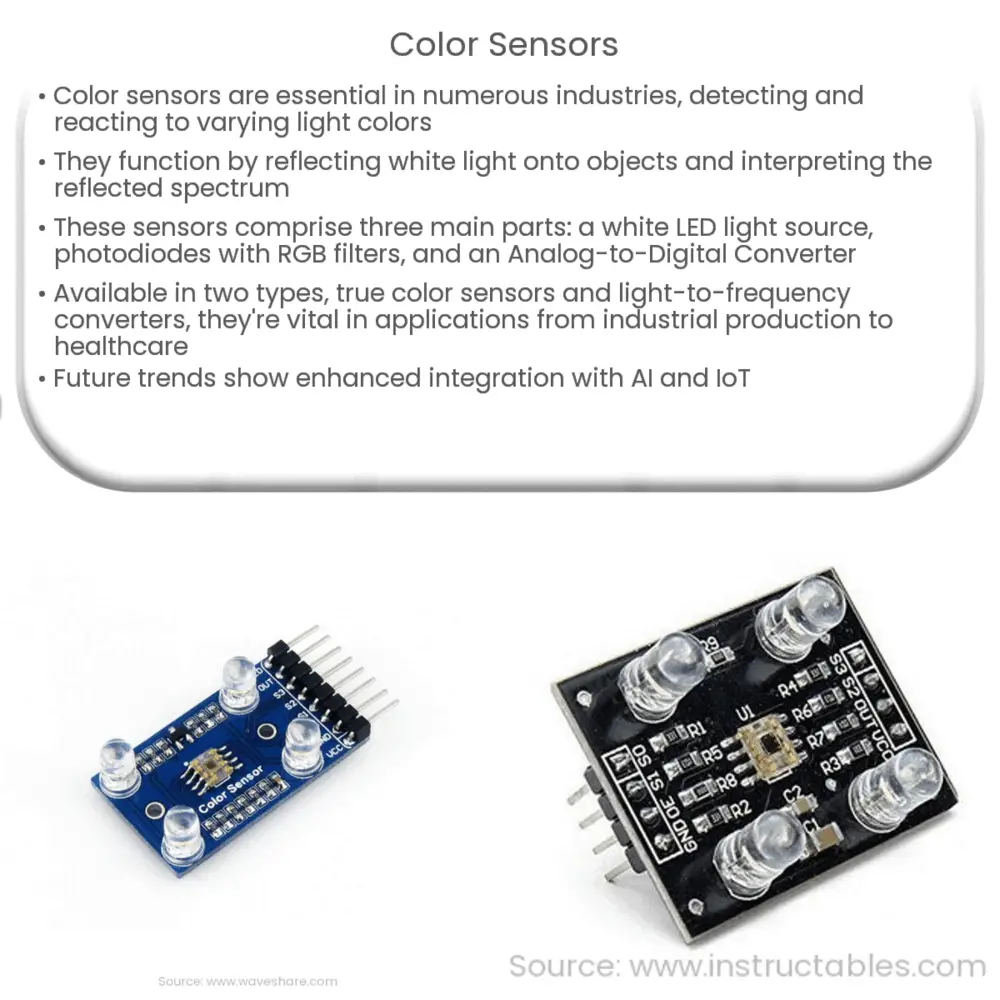Explore the intriguing world of color sensors, understanding their working principle, components, types, applications, and future trends.

Understanding Color Sensors
Color sensors are a fascinating piece of technology that play a critical role in many industries. These tiny devices, embedded in a multitude of applications, have the ability to detect and respond to certain types of light, often by discerning different colors. They have become an integral part of our technologically-driven world, being utilized in everything from production lines to robotics and from smart devices to light-dependent devices.
The Working Principle of Color Sensors
The color sensor operates on the principle of light reflection. White light, which contains all colors, is emitted towards the object whose color is to be determined. Depending on the color of the object, a specific part of the light spectrum is reflected back to the sensor. The color sensor then interprets this reflected light and determines the color.
Components of a Color Sensor
There are three main components in a color sensor:
Types of Color Sensors
There are essentially two types of color sensors:
- True Color Sensors: These sensors use three separate light receivers to perceive red, green, and blue light. The sensor emulates the human eye’s perception of color, providing accurate and reliable color detection.
- Light-to-Frequency Converters: This type of color sensor measures the intensity of light and converts it into a frequency output. They are often used in applications that require light intensity measurement but don’t necessarily require accurate color discrimination.
In the next section, we will discuss the applications of color sensors and the future trends in this field.
Applications of Color Sensors
Color sensors are used in a broad range of applications across various industries:
Future Trends in Color Sensors
The future of color sensors is quite promising with advancements in technology and an increase in their potential applications. With the rise of the Internet of Things (IoT), more devices will be equipped with color sensors to provide detailed environmental data. Furthermore, advances in AI and machine learning will improve the color sensors’ data interpretation capabilities, making these devices smarter and more autonomous.
Conclusion
In conclusion, color sensors have come a long way from being just simple light-detecting elements. Their ability to discern different colors has paved the way for innovative applications in diverse industries, making our lives easier and more efficient. As the technology behind color sensors continues to evolve, we can expect them to play an even more integral role in the future, unlocking new possibilities in areas like AI, IoT, and beyond.

